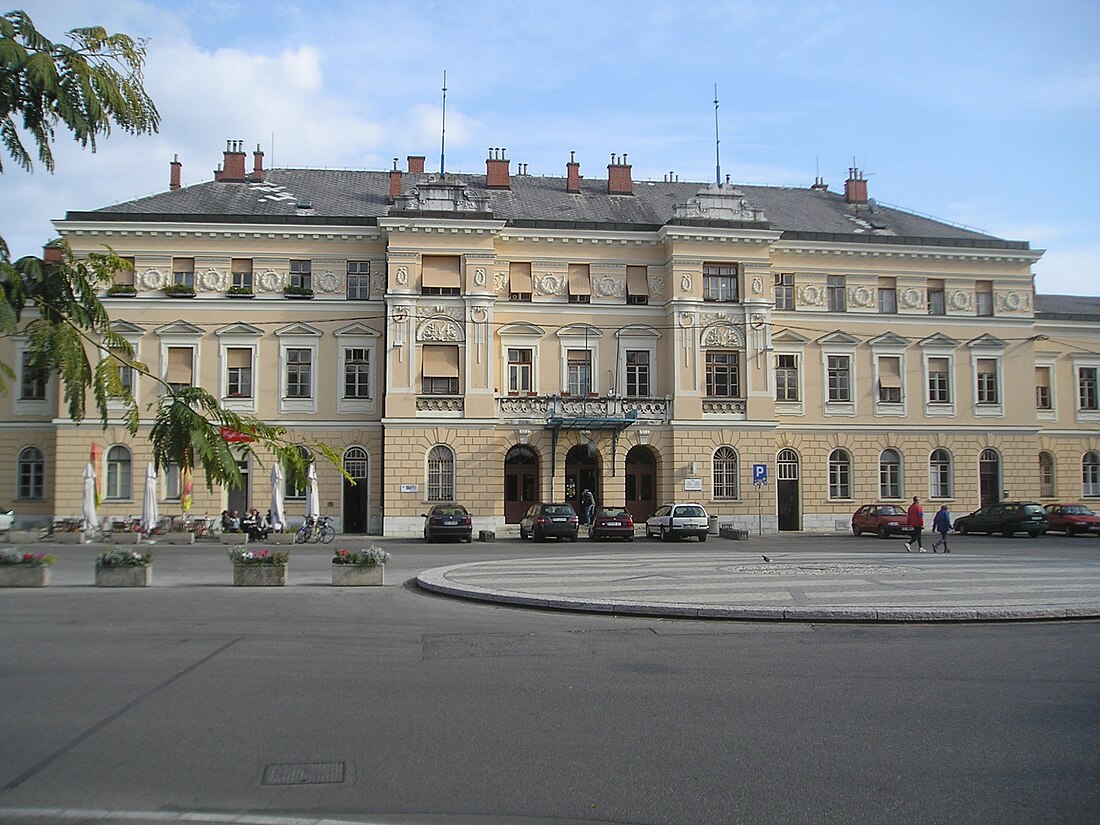Top Qs
Timeline
Chat
Perspective
Transalpina/Europe Square
Square divided between the towns of Gorizia, Italy and Nova Gorica, Slovenia From Wikipedia, the free encyclopedia
Remove ads
Transalpina Square (Italian: Piazza della Transalpina,[3] meaning "Square of the Transalpina [Railway Line])"; Slovene: Trg Evrope,[4] meaning "Europe Square"), is a square divided between the towns of Gorizia, northeastern Italy, and Nova Gorica, southwestern Slovenia. The railway station of Nova Gorica is located at the eastern end of the square, on the Slovenian side.


Remove ads
History
Overview
From 1947 (Treaty of Paris) an international border between Italy and Yugoslavia (Slovenia since 1991) crosses the square.[5] Until 2004 the square was divided by a border wall;[6] movement on the square is now free because both Italy and Slovenia are EU members and part of the Schengen Area.[7] Before 21 December 2007, free movement was only allowed within the square provided that a person that entered the square from one country returned to that country. An approved border crossing was located 100 m (330 feet; 110 yards) from the square. It is now no longer needed and has not been in use since 2007.
Naming
The square, in which is located Nova Gorica station, until 1947 Gorizia Montesanto,[3] was named after the Transalpine Railway,[1][2] Jesenice-Trieste. The naming of the square is somewhat controversial because Slovenia suggested "Europe Square", but Italy has preferred to use the old historical name Piazza della Transalpina.
Remove ads
Location

On the Slovenian side the square is crossed, parallel to the station building, by a road named "Kolodvorska pot". The partly parallel Italian road is "Via Ugo Foscolo", that continues as "Via Caterina Percoto". Always on the Italian side, "Via Giuseppe Caprin", that starts in "Via Montesanto" ends in front of the station.
Events
In summers, the square is regularly used for concerts, public meetings, and public demonstrations or protests against local politics or current events.[citation needed]
Gallery
- Metal plaque installed in 2004 in the middle of the square at the border point, once crossed by the "Gorizia Wall" [the latter separated Slovenian Yugoslavia from Italy, and during this era border controls were carried out the same way as along Berlin wall, moreover this was strengthened with barbed wire to prevent escapes [citation needed]]
- Detail of the metal plaque
- The western corner of the square (and station) from "Via Ugo Foscolo" (Gorizia). The remaining parts of the wall are shown.
- From left: Vittorio Brancati (mayor of Gorizia), Mirko Brulc (Mayor of Nova Gorica), Romano Prodi (member of the European Commission) and Dragan Valenčič (mayor of Šempeter-Vrtojba); during the ceremony of the fall of the border (2004)
Remove ads
References
External links
Wikiwand - on
Seamless Wikipedia browsing. On steroids.
Remove ads






